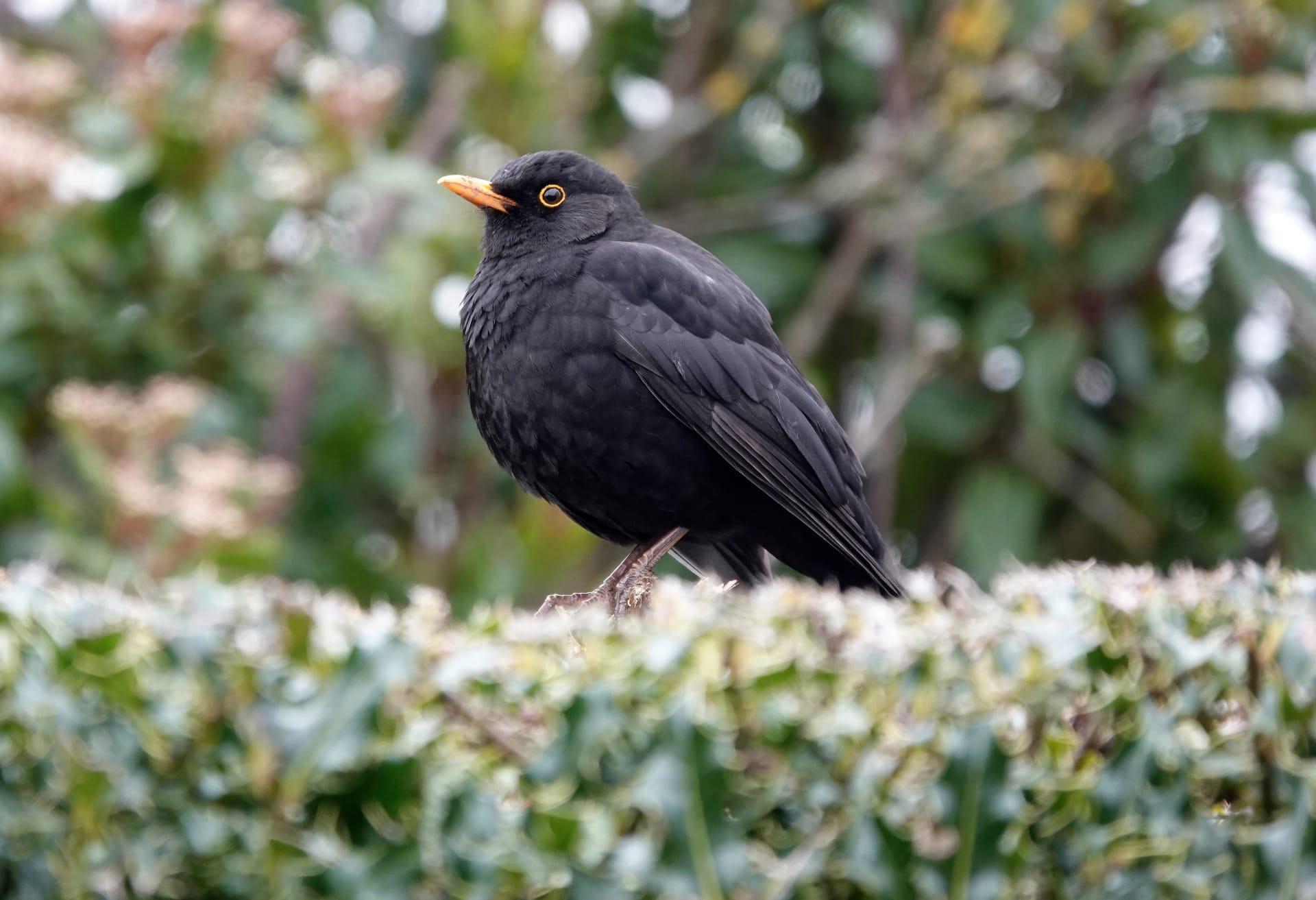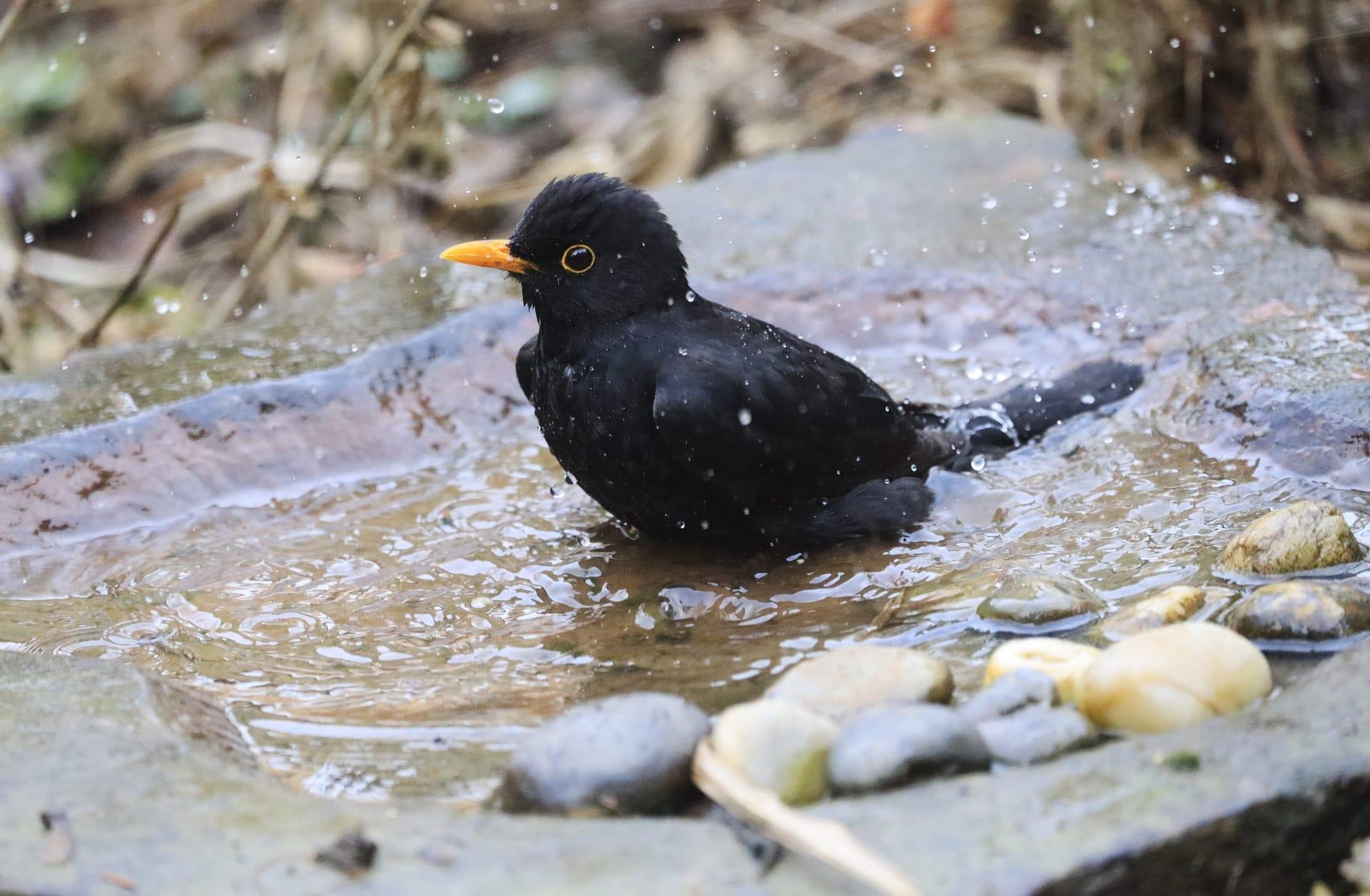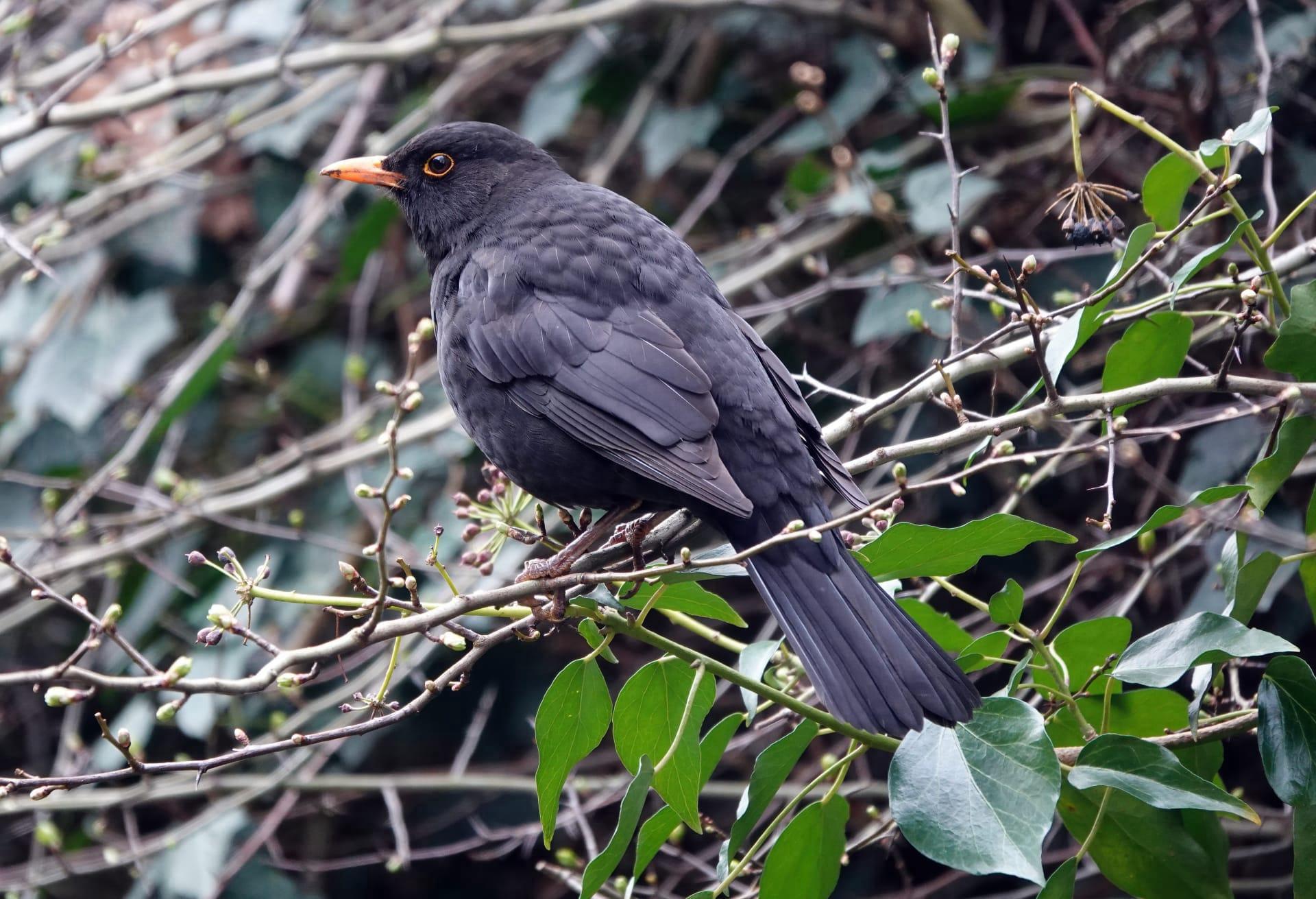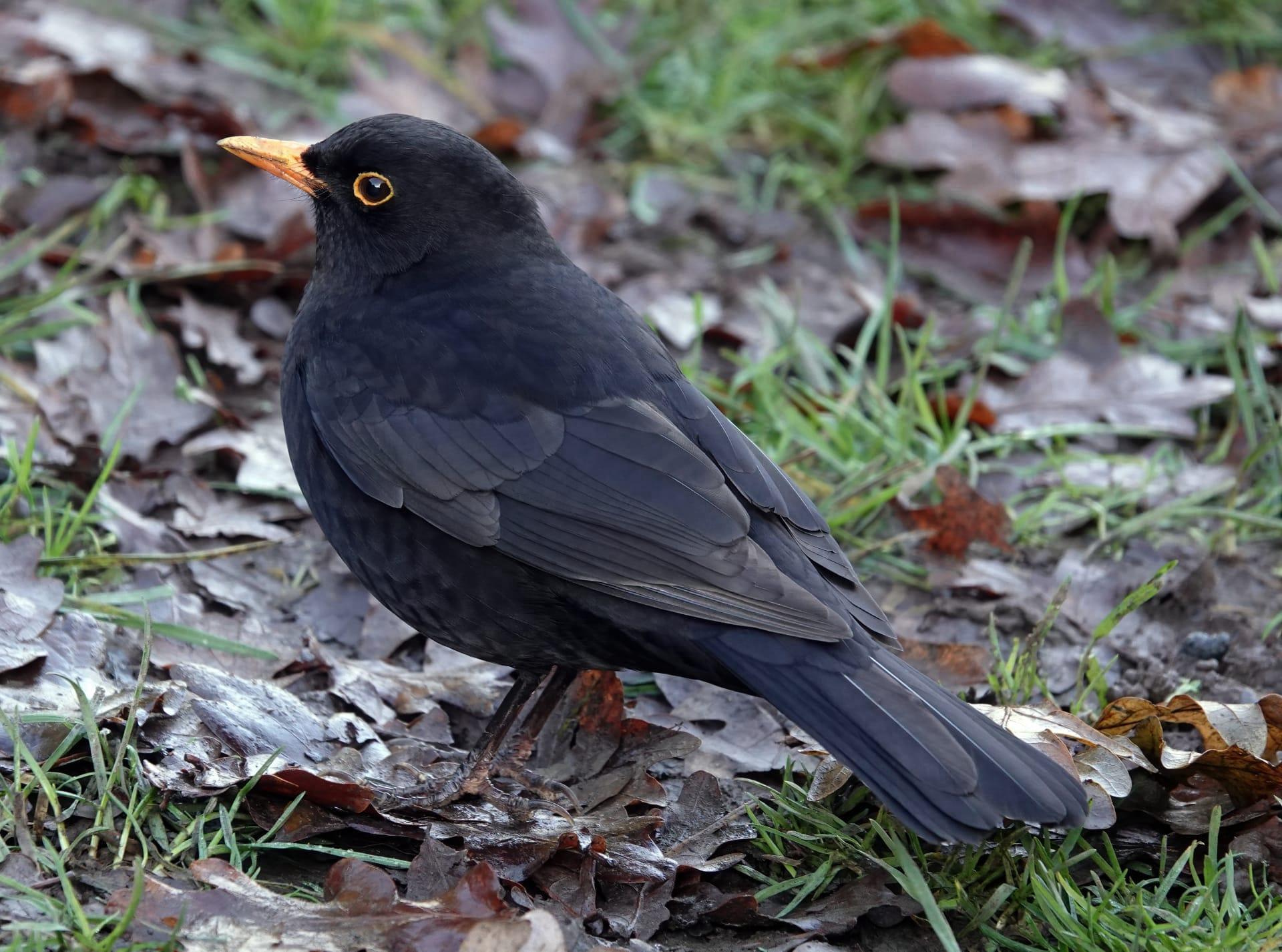Blackbird Characteristics
- Home /
- Mini Encyclopedia /
- Animal /
- Blackbird Characteristics
1
Blackbirds, often spotted in gardens and woodlands, are fascinating birds with distinct physical characteristics. Typically, an adult blackbird measures about 9 to 11 inches in length, with a wingspan ranging from 13 to 17 inches. This size allows them to navigate through various environments with agility. Males are notably recognized for their glossy black plumage and bright yellow beak and eye-ring, while females and young blackbirds are more brown with mottled textures. Regarding lifespan, blackbirds can live up to 10 to 15 years in the wild, although the average is closer to 3 to 4 years, due to various factors like predation and environmental conditions.
One of the most remarkable organs of a blackbird is its syrinx, a vocal organ located at the base of a bird's trachea. This unique structure allows blackbirds to produce a wide range of sounds, from melodious songs to sharp alarm calls. The syrinx consists of vibrating membranes that can produce multiple tones simultaneously, making the blackbird's song one of the most complex and varied in the bird world. This ability is not just for attracting mates or warding off rivals; it also plays a crucial role in establishing and defending their territory.

2
Question: "Why do blackbirds sing more during dawn and dusk?"
Answer: Blackbirds are famous for their dawn and dusk choruses. This behavior, known as crepuscular singing, is most prominent during the breeding season. The reason behind this timing is multifaceted. Firstly, the quiet of dawn and dusk allows their songs to travel farther, helping to attract mates and establish territory. Secondly, these times are cooler, meaning less energy is spent on singing. Finally, singing at dawn and dusk reduces the risk of predation, as these are not peak hunting times for many of their predators. Thus, this behavior is a strategic adaptation that maximizes the impact of their song while minimizing risks.

3
Blackbirds exhibit fascinating locomotive features, particularly in their flight and terrestrial movement. In flight, blackbirds display strong and direct patterns, interspersed with rapid wing beats and brief glides. This flight style aids in quick maneuvering through dense foliage. On the ground, blackbirds are known for their distinctive 'hop-and-stop' movement. They hop forward to disturb insects and other prey from the ground cover, then stop to spot and capture them. This method is both efficient and effective in foraging.
In terms of feeding habits, blackbirds are omnivorous, displaying a versatile diet. Their diet primarily consists of insects, worms, and berries, varying with seasonal availability. During breeding season, their preference shifts towards protein-rich insects and worms to feed their young. Outside of breeding season, blackbirds consume more plant-based foods, especially berries, which are a vital energy source. This dietary flexibility allows blackbirds to adapt to different environmental conditions and food availabilities.

4
The habitat of blackbirds is diverse, encompassing a range of environments from dense woodlands to urban gardens. They are versatile and adaptable, thriving in areas that provide sufficient cover and foraging opportunities. Blackbirds prefer habitats with a combination of trees and shrubs for nesting and open ground for foraging. They are commonly found in forests, hedgerows, parks, and gardens, showing a remarkable ability to coexist in human-altered landscapes.
Regarding reproduction, blackbirds are monogamous, often forming pair bonds that last a breeding season, and sometimes longer. The female blackbird is primarily responsible for building the nest, which is usually located in dense shrubbery or trees, safe from predators. They typically lay 3-5 eggs per clutch, with two to three broods raised each year. The eggs are incubated for about 14 days, and the chicks, once hatched, are dependent on their parents for food and protection until they fledge at about 13-14 days old. The high reproductive rate is a response to the relatively high mortality rate in the wild.

5
Book: "The Secret Life of the Blackbird" by Ian Newton, published in the United Kingdom in the late 2000s, offers an in-depth exploration into the world of blackbirds. Newton, an eminent ornithologist, delves into the behavioral patterns, habitat preferences, and the remarkable adaptability of blackbirds in various environments. The book is rich with details from years of observation and research, providing readers with a comprehensive understanding of these common yet fascinating birds.
Book: "Blackbirds: The Untold Story" by Martin Gregory, released in the early 2010s in the United States, provides a unique perspective on blackbirds. Gregory, a wildlife biologist, combines scientific research with captivating narratives to explore the blackbird's role in ecosystems. The book covers topics ranging from the blackbird's evolutionary history to its modern-day interactions with humans, offering readers an engaging and informative look at these ubiquitous birds.